
Learning how to recognize the different types of bees you might encounter can save you from suffering the severe effects of fatal bee stings. Whether you’re interested in becoming a beekeeper or not, you must prepare for the worst. People should call professional beekeepers instead of getting rid of an unwanted beehive by themselves. One thing you should know is that staying calm saves you from getting attacked by an army of bees.
Despite the possibly deadly stings of most bees, they play an important role in our daily lifestyle. Buying protective gear or smokers to transfer beehives to safer places proves a better alternative than killing them by force. Don’t subject yourself to becoming one of the reasons why bees go extinct.
Bees hold a critical part in pollinations. Butterflies or other insects don’t make use of pollen like the way bees do. Because of this, bees contribute over $30 billion every year to the growth of crops. Without them, world leaders cannot provide for the needs of all human and animal populations. We won’t just lose vegetables and fruits but also the meat we consume in almost all meals.
After knowing all this, it’s clear why professional beekeepers take their jobs seriously. Additionally, the usual honeybees play a bigger role than other types of bees out there.
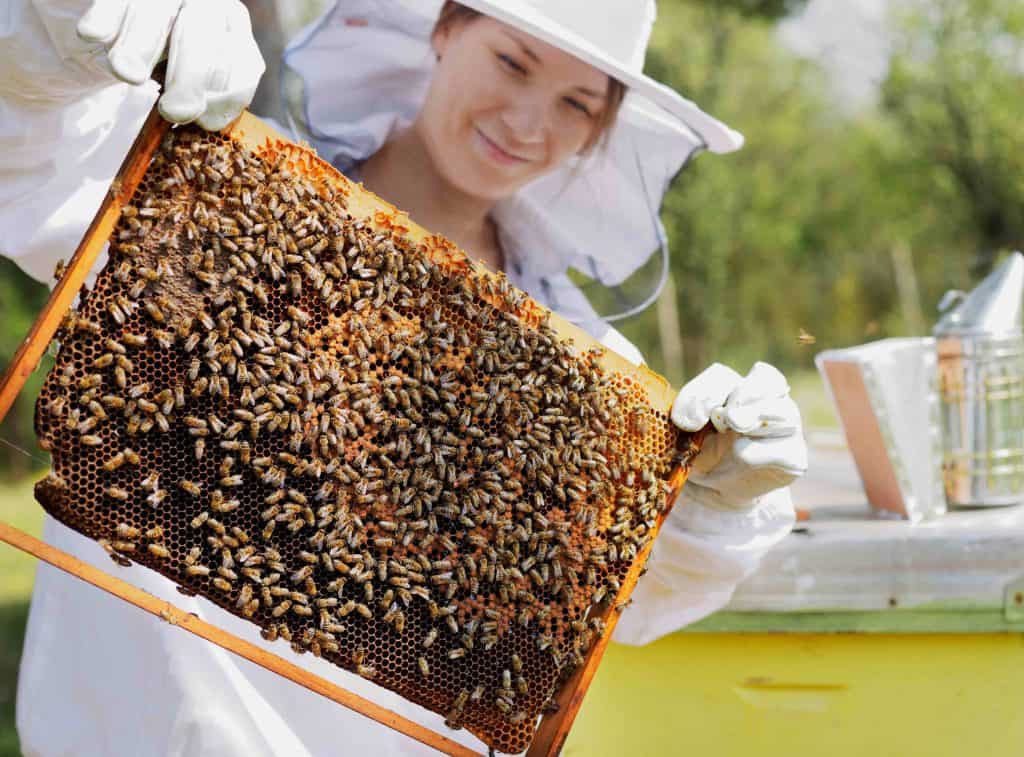
The Difference Between Bees and Wasps
Remember to take note of the differences between various types of bees and wasps. So far, more than 100 thousand species resemble most bees you find in your backyard. The two insects feature similar appearances of bright black and yellow patterns with narrow waists. However, you must look closely to see that wasps let their small legs hang while flying, unlike bees. They also have no hair compared to bees who use it to carry more pollen. Plus, wasps showcase more aggressive behavior toward most living beings they encounter. They also do not contribute to the world’s pollination needs.
Make sure to stay away from wasps and just keep calm when around bees. When it comes to their hives, wasps use only one opening to enter or exit. Bees, on the other hand, use several areas to come in or out of their nest.
Learn to identify which ones you spot in your backyard or ask your resident beekeeper for more information. To help you out, we came up with a list detailing the characteristics of the bees you see every day.
1. Western Honeybees (Apis mellifera)
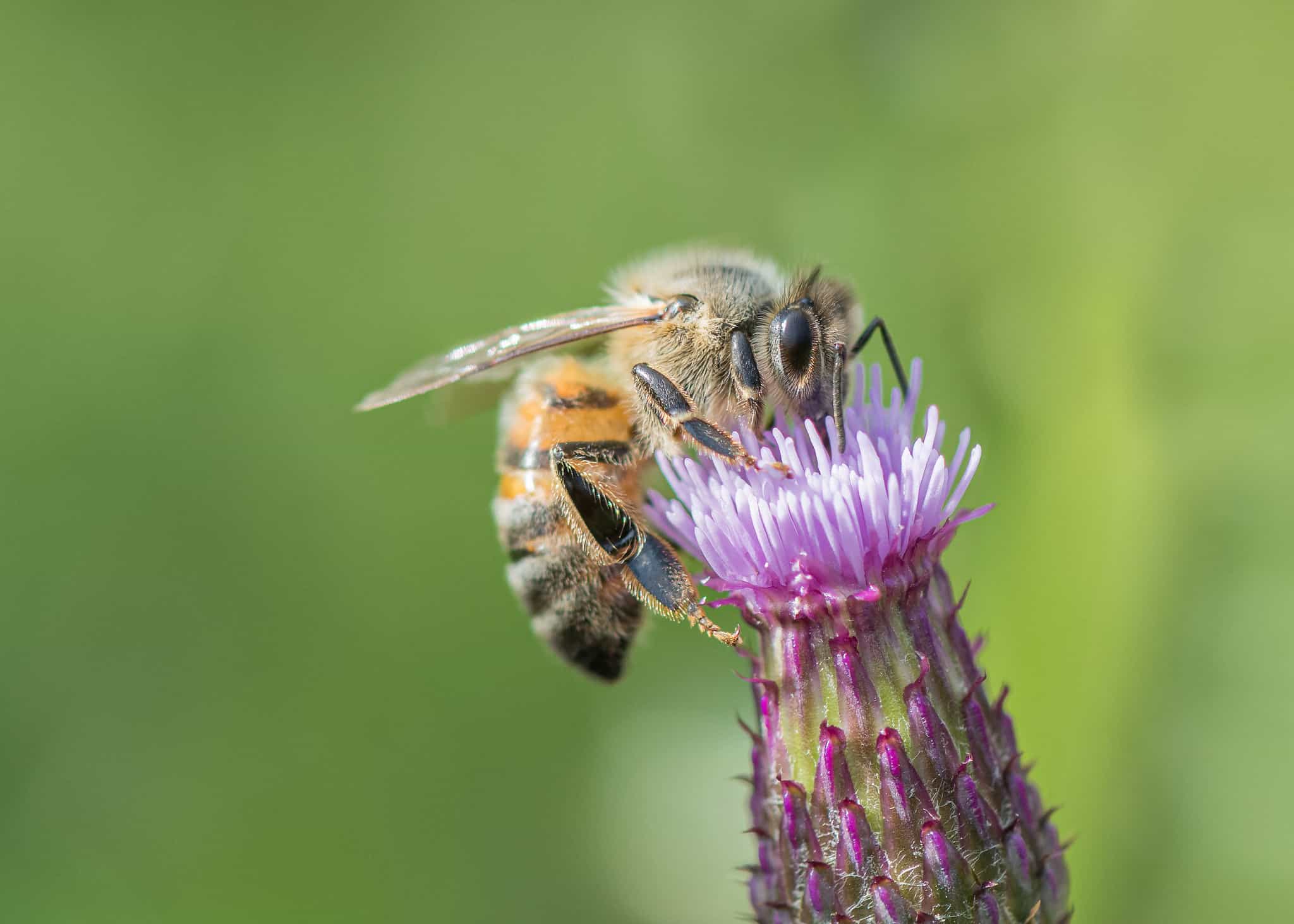
You might recognize the Western honeybees from your casual afternoon strolls. Various hives or queens of this type of honeybee were imported to North America to aid in the pollination of the country’s crops. You can easily identify the female workers that feature unique black stripes with golden brown streaks.
Most of the Western honeybees residing in the USA formed colonies in artificial hives closely monitored by professional beekeepers. Because of this, you barely find them independently living in the wild. If you live far from your local beekeeper, you still might spot a few Western honeybees buzzing about.
The female worker bees fly for 3 miles or more to collect pollen for their hive. The bees won’t sting you unless you’re near their hive. When they do sting you, they basically laid down their life for their colony because they die right after using their stingers.
2. Bumblebees (Genus: Bombus)

No, we don’t mean Bumblebee from the Transformers series. The beloved Autobot got its name from these bees you commonly spot in U.S. forests. About 49 species of bumblebees natively reside in America. They appear larger than honeybees with their black bodies that feature sparse yellow and black hair. You might mistake them for Carpenter bees but that kind of bee grows much larger than bumblebees.
Like most people, you probably wonder how bumblebees got their unusual name. Experts started calling them bumblebees based on the unique vibrating noise they make while inside a flower. These bees sonicate to collect pollen that they store onto their hair. You can spot most of their hives in abandoned mammal holes in the ground.
Similar to honeybees, bumblebees play a big role in the pollination of crops. They also rarely sting humans unless you get too close to their colony’s nest. Bumblebees usually collect pollen from various wildflowers you can find in the forest.
3. Carpenter Bees (Genus: Xylocopa)
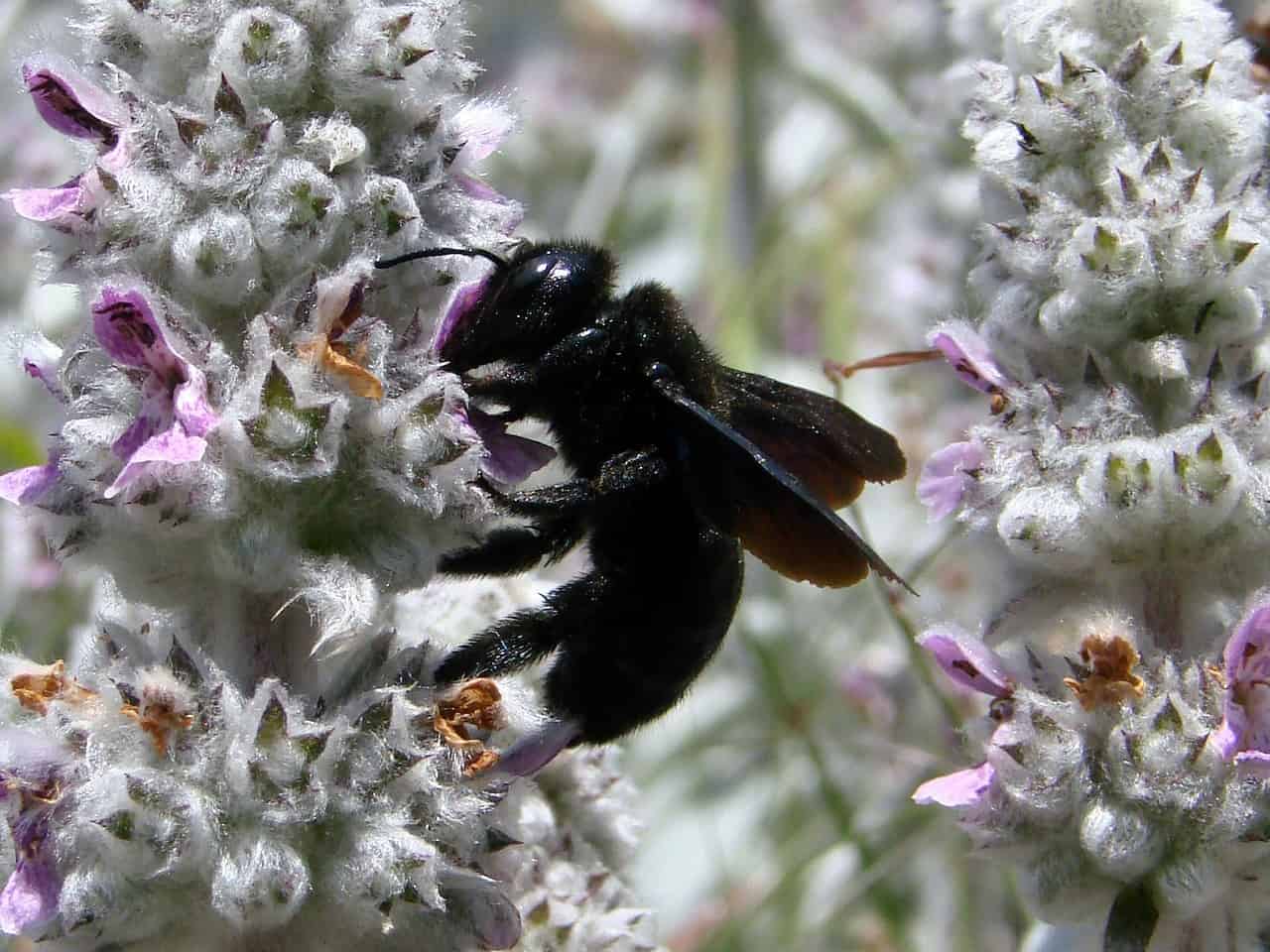
As mentioned, carpenter bees appear as larger-looking bumblebees. However, unlike bumblebees, carpenter bees hold a bad reputation for most people who encounter them near their homes. This comes from the fact that experts also know them as wood bees.
The female workers of carpenter bees pierce through wood leaving behind holes that look like they came from a power drill. They don’t care about the damage they leave behind on the wooden structures they build their nests on. The females then lay their eggs that hatch in the spring. Unlike honeybees, carpenter bees go on their own after leaving their nest.
Carpenter bees gained infamy for eating away the flowers that other bees collect pollen from. To make matters worse, these bees also steal the nectar from blueberries before blueberry bees could do their jobs. Despite their bad reputation, carpenter bees still contribute to society as pollinators.
4. Leafcutter Bees (Genus: Megachile)
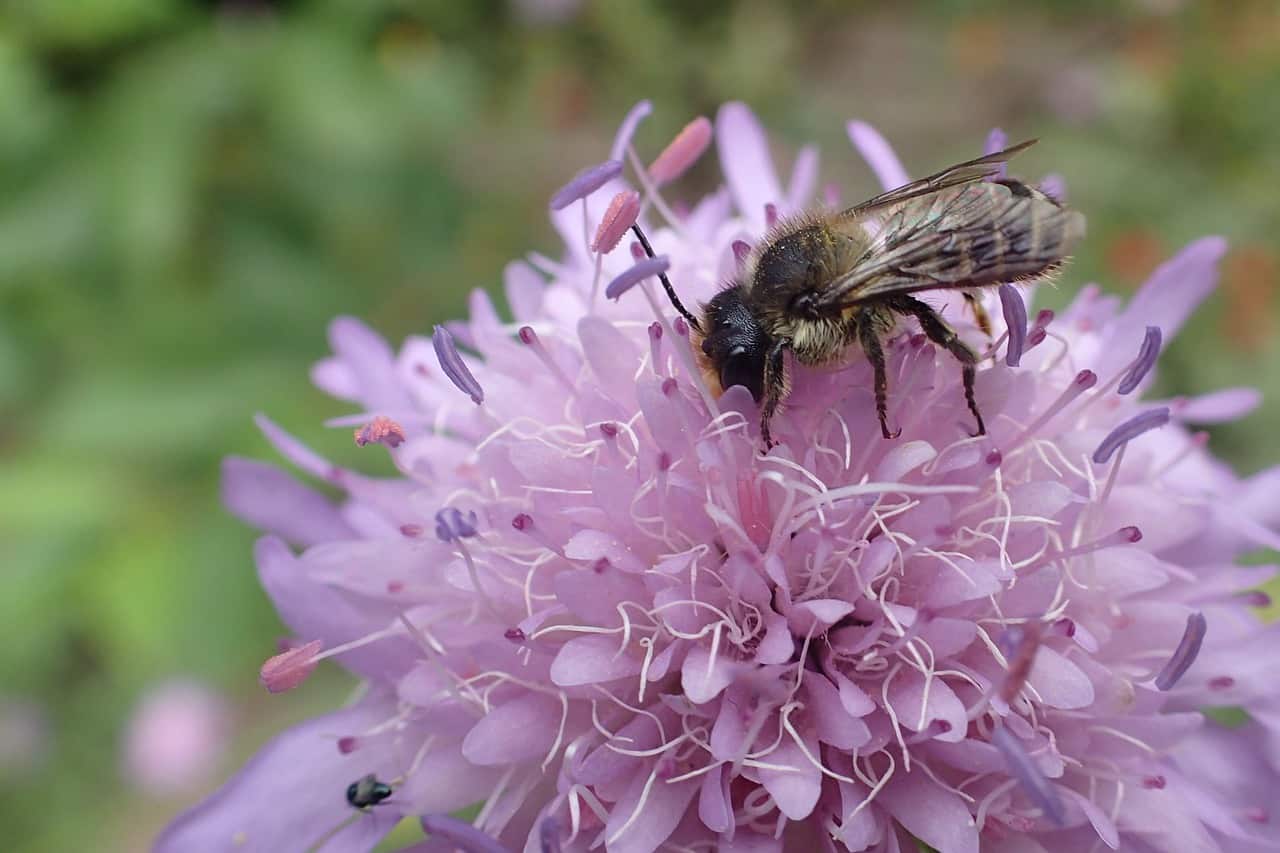
Leafcutter bees behave similarly to mason bees when it comes to building their nests. However, they prefer to use leaves instead of mud to fill up their nest cavities. You can easily point them out by their black bodies that have white hair that covers the bottom of their abdomen. Most species feature large heads with jaws that they use to cut leaves.
Most professional growers of farmers use leafcutter bees to pollinate crops like alfalfa, carrots, blueberries, and onions. Aside from that, these bees also play a huge part in pollinating various kinds of fruits, vegetables, and wildflowers. Plus, leafcutter bees don’t sting people unless you try to hold them.
5. Blueberry Bees or Southeastern Blueberry Bees (Habropoda laboriosa)
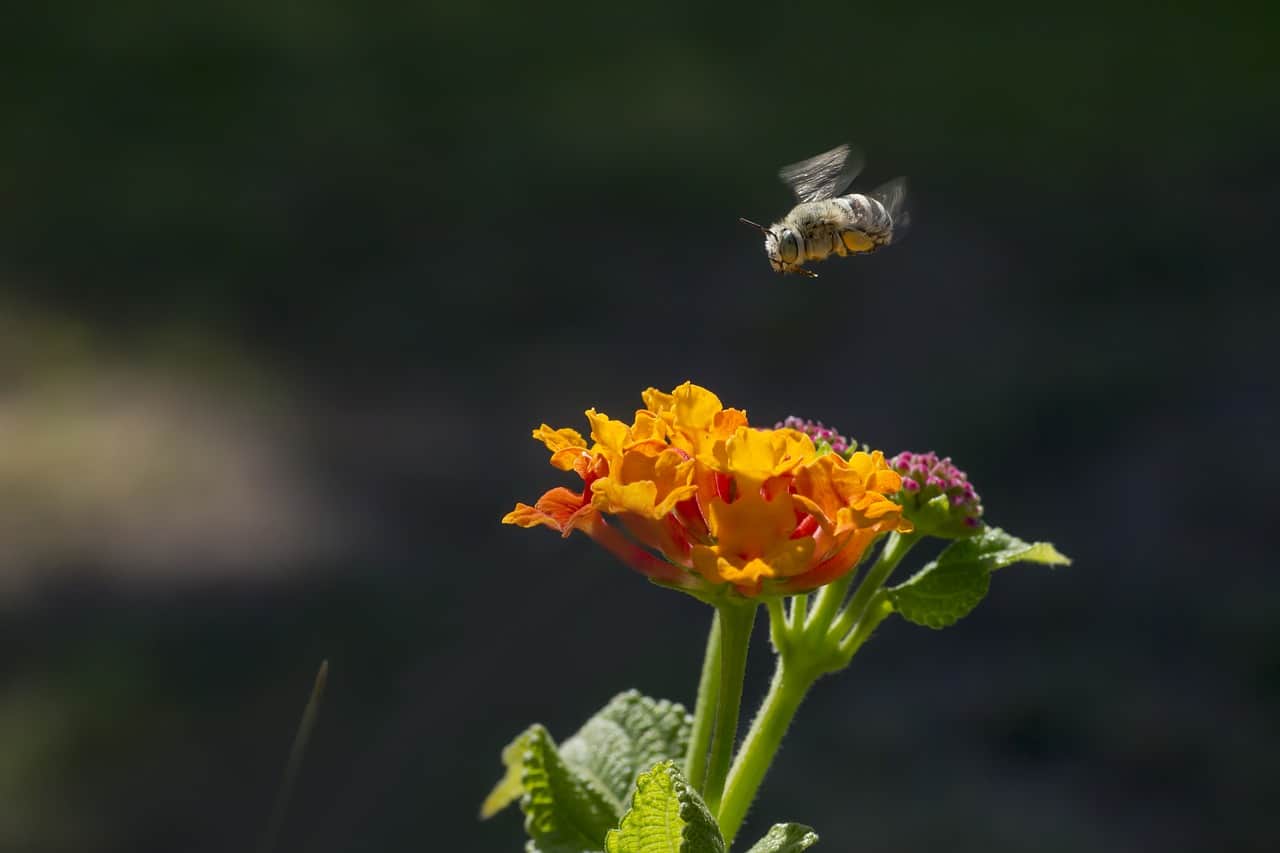
True to its name, blueberry bees evolved with native blueberries. Because of this, these bees fit perfectly inside the bell-shaped flowers of blueberries. Aside from their favorite berry, blueberry bees also pollinate other plants that bloom in the spring.
Like most independent bees, blueberry bees only sting people when they get attacked or handled. They also build their nest on the ground located neat blueberries for easier access. Because of this, you might mistake them for bumblebees.
6. Squash Bees (Genera: Peponapis and Xenoglossa)

Just like the blueberry bees, squash bees fall under the smallest kind of our types of bees. Plus, they also almost specialized in pollinating vegetables, not just flowers. True to its name, squash bees pollinate squash. However, they don’t hold out on pollinating on zucchini, pumpkins, and other kinds of gourds too. You can tell them apart from other bees with their black, tan, or orange colors.
Squash bees take flight just before dawn. They then return to their respective nests in the middle of the morning to rest before taking flight once more at dusk. Squash bees follow this routine anticipating the opening of the flowers of squashes and melons. You can spot the males nesting inside flowers while the females live separately in the ground.
If you happen to witness a few bees buzzing about squash flowers, you might notice squash bees quickly leaving. They prefer to finish their jobs quickly unlike bumblebees who tend to stick around when pollinating in squash flowers. This does not indicate laziness in any way. Squash bees get the job done because they specialize in pollinating squash while bumblebees don’t.
Like most of the bees we mentioned, squash bees only sting when you wander too close to their territory. But, unlike other types, squash bees only collect pollen from plants under the genus Cucurbita. If you plan on growing squash, melons, or other types of gourds, best be prepared for a few squash bees lurking around your property.
7. Sweat Bees or Halictidae Bees
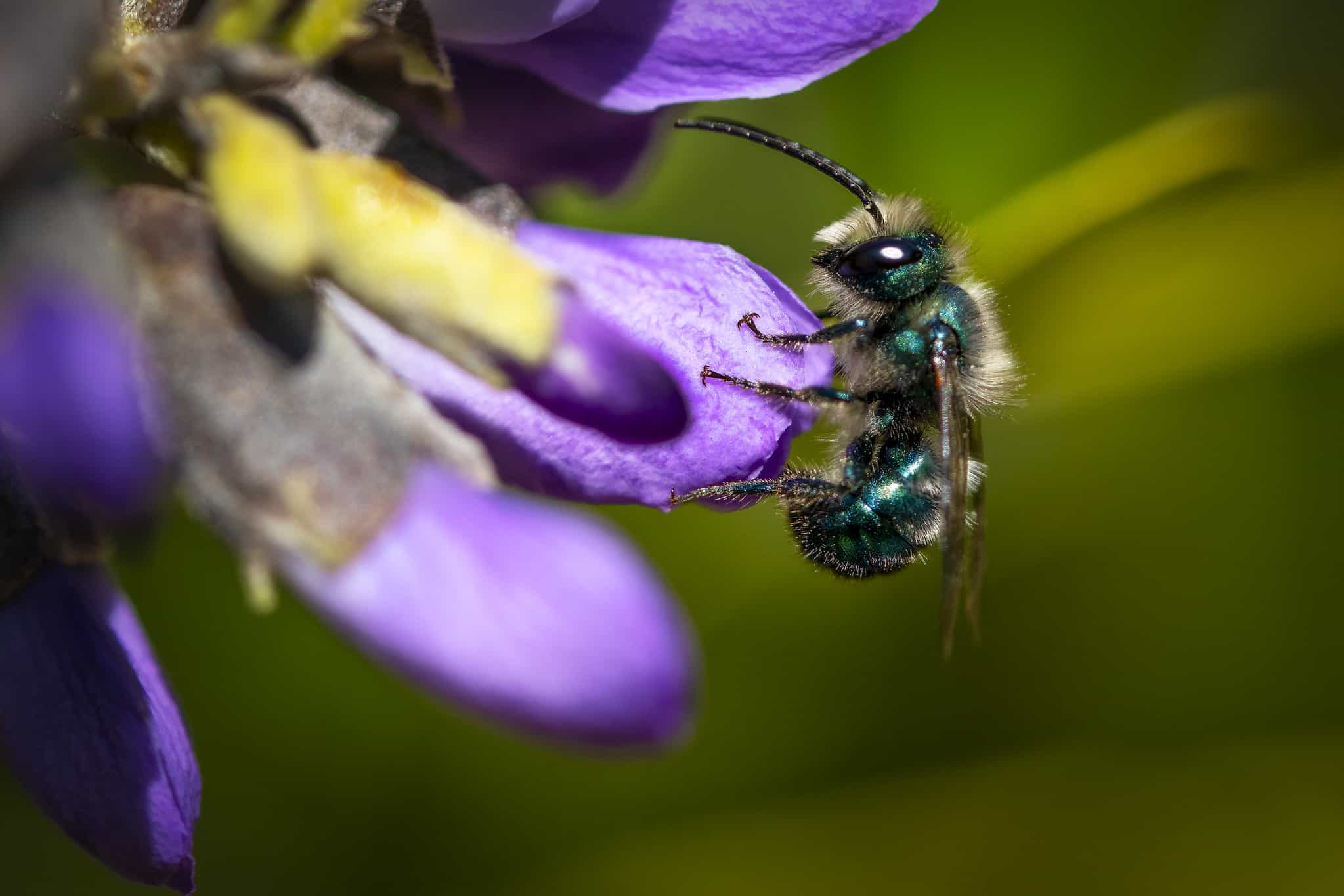
Sweat bees got their name after being drawn to the scent of human sweat. These bees usually buzz about during October and November. They work efficiently by gathering pollen from a wide variety of flowers and plants.
You may find it hard to distinguish sweat bees from other types because of their wide array of colors. Aside from the usual black body, sweat bees feature either metallic shades of blue or the usual stripes on their abdomen. Some people even mistake them for flies due to their high-speed flying. Unlike other female workers, female sweat bees don’t really care about your presence. Spare yourself from getting stung by simply leaving them alone.
8. Mason Bees (Genus: Osmia)

Out of the various types of bees on this list, the mesmerizing metallic colors of mason bees caught our eye. These bees don’t let their small size stop them from showcasing impressive agility with their fast-flying skills. You usually see them buzzing around during springtime.
Experts named mason bees after their habit of closing nest cavities with mud. They sometimes use a hollow stem or twig as an alternative to mud. Unlike other bees, you won’t find pollen baskets on the legs of mason bees. They collect pollen using the hair located on their abdomen’s underside.
Mason bees get easily lured into bee hotels made built by experienced gardeners. You can build one for yourself by placing it near muddy areas. They make use of the pre-drilled holes to lay their eggs that will hatch in the next spring. Using the nectar they gathered, female mason bees use the enzymes to produce food for their soon-to-be-born offspring.
9. Hoverflies (Family: Syrphidae)

Unlike the types of bees on our list, hoverflies only hold a spot due to their effective mimicking of bees. True to their name, these flies hover over flowers to collect nectar. Much like bees, hoverflies contribute to the food chain as pollinators.
Hoverflies can be spotted almost anywhere in the world. Sometimes, some encounters with these flies get mistaken as witness accounts of bees. To differentiate them, you must observe their wings and eyes. Bees fly with four wings while hoverflies buzz around with two only two wings and a large set of eyes on either side of their heads.
As mentioned, hoverflies only copy the way bees act. They can ward off predators with their buzzing and high-speed flying. Plus, these flies cannot sting you since they don’t have any stingers attached to their bodies. You can easily spot them hovering over flowers with sweet nectars like mint, asters, or hyssop.
10. Vulture Bees or Carrion Bees (Trigona)
Among all the types of bees in our compilation, we advise you to think twice before trying out the honey made by vulture bees. Yes, you didn’t misread that because this type of bee exists. And, true to its name, vulture bees hang around decaying corpses.
Just like honeybees, vulture bees produce honey. However, they do this by following their diet of consuming the liquefied flesh from rotting animal bodies. These bees drill through the eyes of the dead animal before eating and delivering the chewed-up remains to their hive. The female worker vulture bees then use their digestive enzymes to produce the honey-like substance that they store to feed their hive’s population. Plus, a component from their unique enzymes keeps decaying properties from rotting their unusual honey.
The honey produced by vulture bees closely resembles the consistency of wild honey. However, experts strongly discourage people from trying out the honey of vulture bees. This comes from the fact that these bees only produce enough honey for their hive, unlike honeybees that produce too much of what their colony needs.
11. Miner Bees or Chimney Bees (Anthophora abrupta)
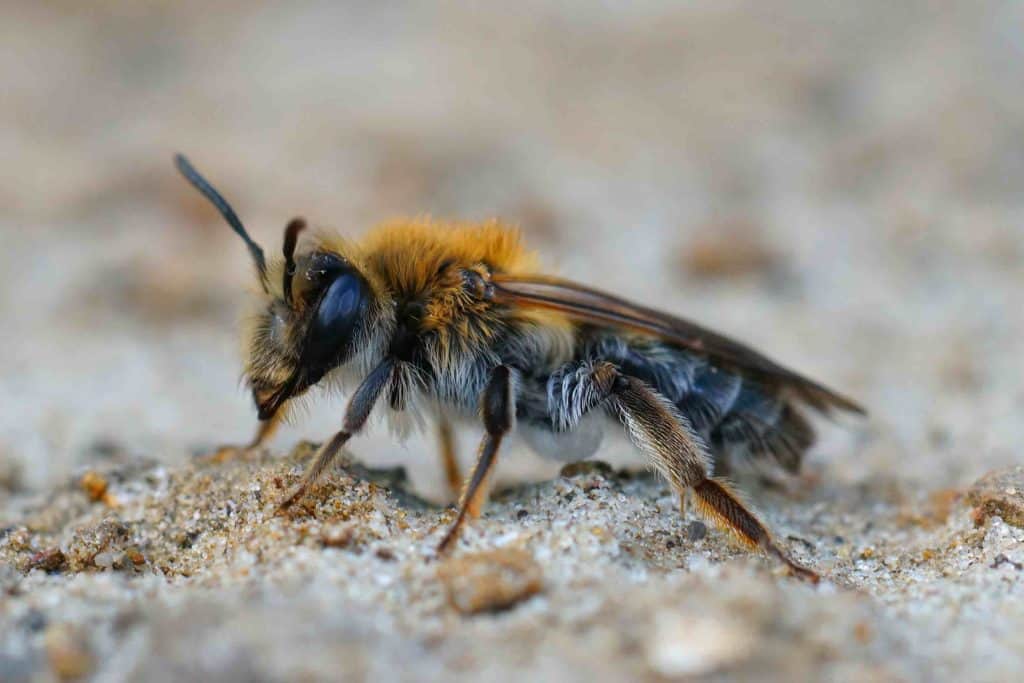
You may not know this but miner bees also go by the name chimney bees. People often mistake them for bumblebees due to their hairy black-and-yellow striped bodies. However, unlike other types of bees, miner bees don’t mind human contact. They also don’t sting or bite any threatening force in their territory.
Like honeybees, miner bees play an important part in flower pollination especially in the mid-west region in the USA. You can spot them in Texas, Florida, and Canada. They gained the attention of various experts because of their complex nesting behavior. They can be found residing in small openings of old buildings. The unusual behavior comes from the fact that miner bees build nests that they would live in for several years.
Was this page helpful?
Our commitment to delivering trustworthy and engaging content is at the heart of what we do. Each fact on our site is contributed by real users like you, bringing a wealth of diverse insights and information. To ensure the highest standards of accuracy and reliability, our dedicated editors meticulously review each submission. This process guarantees that the facts we share are not only fascinating but also credible. Trust in our commitment to quality and authenticity as you explore and learn with us.
